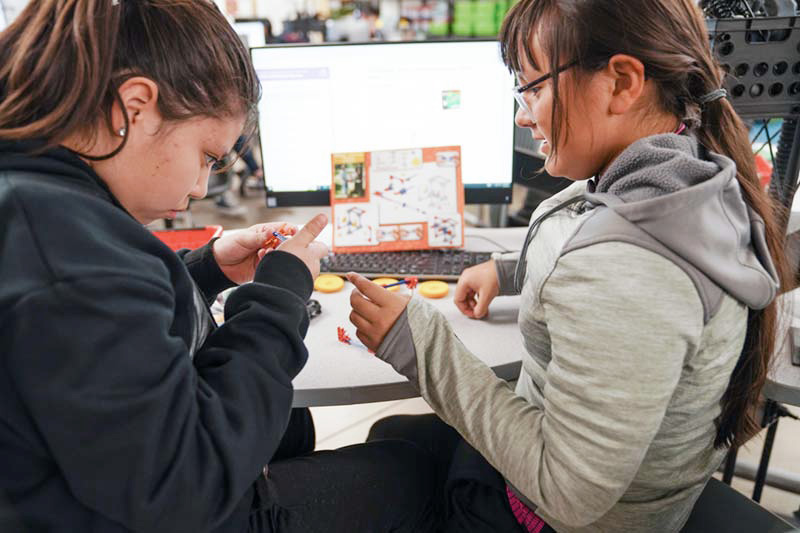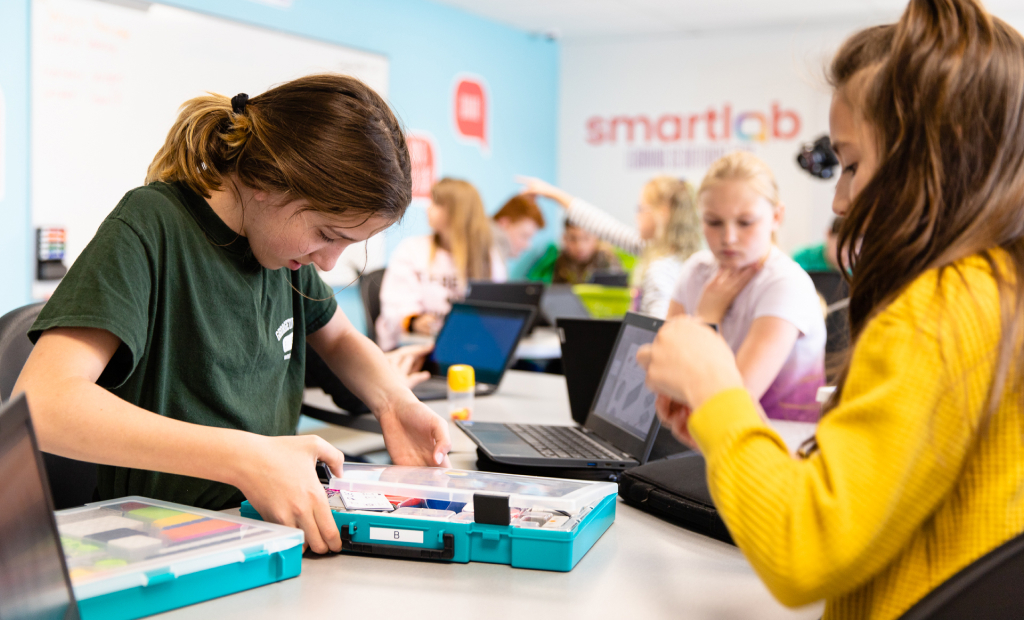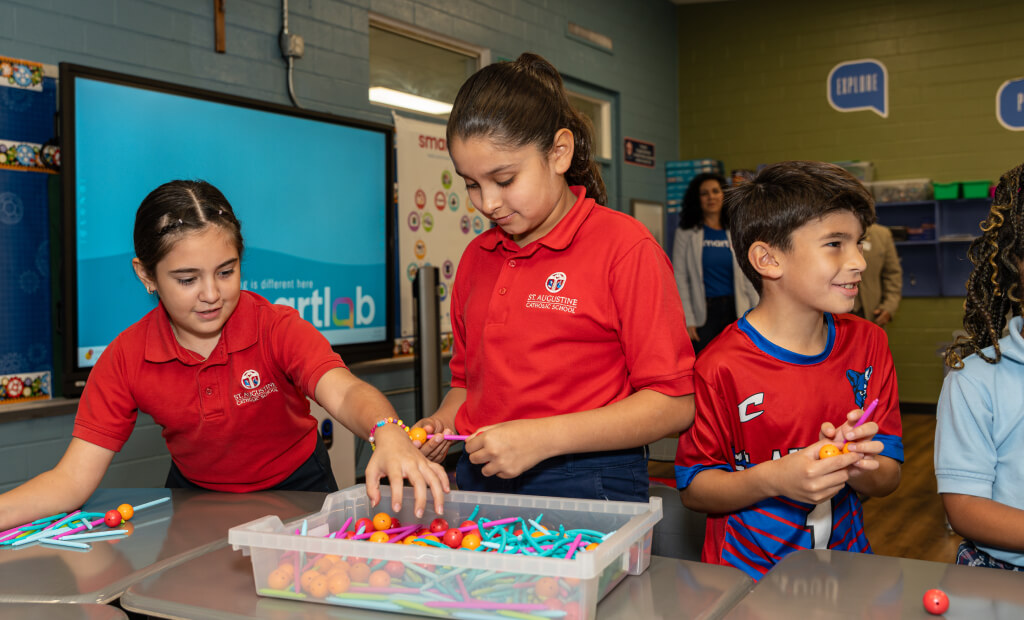Preparing K–12 Students for Manufacturing Careers Through STEM Education
In today’s interconnected world, every career is a STEM career. We employ science, technology, engineering, and mathematical principles in every industry, from farming and healthcare to finance and marketing, whether it’s for data collection, automation, or building solutions.
However, few industries are as centered on STEM as manufacturing. Manufacturing processes rely heavily on elements such as robotics automation, 3D modeling and design, and systems thinking to effectively and efficiently create the products used by every other industry.
The era we’re in is what many experts consider to be the Fourth Industrial Revolution, which brings about a host of new concerns as well as opportunities. We need:
- New digital tools capable of optimizing production to improve economic opportunities
- Approaches that are energy efficient and designed to help reduce carbon emissions.
- Ways to build skills and knowledge to prepare workers for the future of manufacturing.
Today’s students will be the ones to fill these and other high-demand careers, so they need the hands-on experience and critical thinking skills to not only excel in those roles but to see them as exciting and admirable career opportunities.
This article highlights how educators can ensure that learners of all ages experience a STEM education that will prepare them for success in manufacturing.
The Next Stage of Manufacturing
The manufacturing industry has historically been a significant employer in the United States and is currently experiencing a powerful resurgence. According to a recent study by Deloitte, the industry has exceeded pre-COVID employment levels, with nearly 13 million people employed in manufacturing as of January 2024. This revitalization is being driven by historic federal investments in domestic production, infrastructure, clean energy, and advanced technologies.
This growth reflects a transformational shift in what modern manufacturing looks like and the kinds of opportunities it offers. Today’s factories are more than just assembly lines for performing manual labor; they’re innovation hubs for skilled professionals driving advancements in sustainable engineering, robotics, and artificial intelligence. The rise of this so-called “Industry 4.0” requires the integration of advanced automation, data analytics, and AI systems into production.
This is generating demand for skilled workers at every level—from entry-level machine operators and technicians to engineers, designers, and plant managers. However, one of the biggest challenges facing manufacturers today is finding enough qualified people to fill these roles.
According to the Deloitte study, by 2033 an estimated 1.9 million manufacturing jobs may go unfilled due to a lack of skilled applicants. This includes both advanced technical positions and roles requiring soft skills like collaboration, adaptability, and problem-solving.
As manufacturing technology evolves, the skills gap threatens to widen, slowing progress and innovation in the sector. This is where K–12 education has an essential role to play. By integrating hands-on, real-world STEM learning experiences into the classroom, educators can equip students not only with technical proficiency but with the innovation mindset that drives competitive advantage in a global economy.
How STEM Education Builds Manufacturing Career Readiness
The trick here, or “hack” if you will, is that there’s a reciprocal relationship between how STEM education helps prepare students for careers in manufacturing and how lessons that build skills related to manufacturing can nurture an interest in STEM. Provided, of course, that it’s done in a way that’s engaging and aligned with learning outcomes.
STEM education prepares learners for future manufacturing careers
STEM prepares learners to navigate and shape the future of manufacturing by promoting adaptability, technical literacy, and creative problem-solving. Specifically, learners can be introduced to skills needed in real-world manufacturing careers, such as:
- Coding for Automation and Robotics
As smart factories become increasingly automated, students who learn how to code can master the programming languages essential for designing, controlling, and optimizing industrial systems and robots. The advancement of AI-driven robotics isn’t just about working with the machines; it’s about leveraging AI to enhance decision-making processes and improve efficiency. - Advanced Manufacturing and Precision Machining
STEM courses can introduce concepts like CNC (computer numerical control), additive manufacturing (3D printing), and materials science to expose students to techniques that are core to modern production. - Hands-On Problem Solving
STEM aligns seamlessly with the project-based learning (PBL) model, providing practical, hands-on experiences in problem-solving and innovation. Whether it’s assembling a prototype or troubleshooting a mechanical flaw, students gain confidence through doing. - Complex Thinking and Systems Analysis
Manufacturing problems are rarely one-dimensional. STEM teaches students to break down complex challenges, anticipate outcomes, and take proactive steps. These higher-level skills are essential in quality control, lean production, and operational efficiency. - Cross-department Collaboration
Modern manufacturing relies on many roles working together, from production to supply chain management and quality assurance. One of STEM’s greatest advantages is how projects require learners to break tasks into different responsibilities and then collaborate to succeed.
While older students can get these experiences from internships, co-ops, industry partnerships, and other extracurricular opportunities, we miss a crucial opportunity when we save these experiences for only the upper grades.
One of the greatest advantages of STEM instruction is its experiential nature—students can start designing, building, experimenting, and solving problems as early as elementary school. These early interactions spark curiosity, build foundational knowledge, and develop the critical thinking skills needed later on.
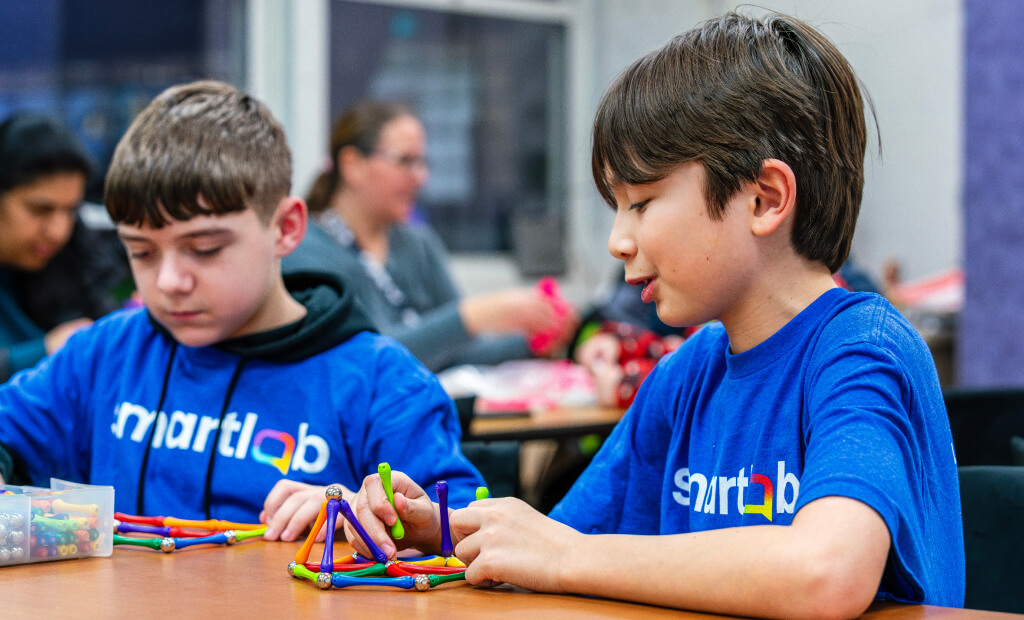
Manufacturing-inspired project-based learning helps to build STEM identity
The question of who “belongs” in STEM is more a matter of identity than of skill. Many students, especially girls and students from underrepresented racial and ethnic groups, don’t see themselves reflected in STEM roles. As a result, they may disengage early, despite having the potential to thrive.
One proven way to help students develop a positive STEM identity is through project-based learning grounded in real-world manufacturing experiences. These learning experiences do more than teach content; they empower students to see themselves as capable creators, thinkers, and problem-solvers.
Active learning has been shown to increase performance in STEM fields in higher education, and it offers more impactful benefits when introduced earlier. But beyond test scores, what makes project-based, hands-on learning so powerful is that it gives students authentic engagement with the subject matter.
In a manufacturing-inspired PBL environment, students aren’t just memorizing equations or learning about tools in theory; they’re building prototypes, designing products, and solving real industry problems. That’s important because a key component of STEM identity development is not just doing the work, but reflecting on it and seeing oneself within it.
Manufacturing projects often involve:
- Teamwork with learners in diverse roles
- Exposure to multiple career paths and skill sets
- Opportunities to explain or “teach back” their process and reasoning
Through articulation and reflection, learners can internalize the idea that they are not just learning about STEM, they are already practicing it. This process is essential to strengthening a learner’s self-concept, confidence, and sense of belonging in STEM and, consequently, in STEM-related careers such as engineering or manufacturing.
Long-term Benefits of Connecting Students with Manufacturing Career Pathways
Connecting students early with manufacturing education can offer a range of long-term benefits, especially when aligned with STEM learning. There are many ways these projects can sharpen technical skills in addition to developing soft skills like teamwork, communication, and adaptability.
- Stronger STEM skill development
Manufacturing pathways reinforce real-world applications of math, science, and engineering. This strengthens students’ grasp of core STEM concepts through hands-on, project-based learning by making abstract ideas tangible and relevant. - Clearer career direction and motivation
Exposure to manufacturing careers helps students connect classroom learning to real opportunities, increasing their motivation, engagement, and persistence in STEM subjects. Knowing the “why” behind what they’re learning can be a powerful driver. - Expanded awareness of STEM careers
Manufacturing projects can expose students to a wide variety of STEM careers they might not encounter otherwise. Different tasks broaden their sense of what’s possible, including positions as engineering technicians, quality analysts, supply chain experts, environmental designers, and more. - Improved postsecondary and workforce readiness
Learners build skills in collaboration, problem-solving, digital fluency, and technical literacy, all core competencies for modern work environments. The biggest benefit is that these skills are transferable across a wide range of STEM and non-STEM careers. - Increased equity and social mobility
For students from underrepresented backgrounds, especially in rural or underserved communities, early exposure to manufacturing careers can open doors to upward mobility. Apprenticeships, industry certifications, and dual-enrollment programs offer accessible routes to success. - Adaptability in a changing economy
STEM-based manufacturing education helps students build skills that are future-proof, such as digital literacy, systems thinking, and innovation. As technologies evolve, students with manufacturing exposure are better positioned to adapt and thrive. - Development of a growth mindset
Like other STEM projects, manufacturing encourages iterative thinking: designing, testing, failing, and refining. This helps students build resilience and confidence in their ability to solve problems over time. - Understanding sustainability and global impact
Modern manufacturing careers often involve designing sustainable solutions, reducing waste, and addressing global supply chain challenges. Through these projects, learners can develop a greater sense of purpose and responsibility in how they can help shape the future.
Strategies to Bring Real-world Manufacturing into the Classroom
Bringing manufacturing education into K–12 classrooms should be about introducing students to the mindset and experiences that are representative of the industry. By embedding real-world projects, tools, and expectations, classrooms can become springboards for future careers in manufacturing.
Here are some general strategies and approaches for bringing more STEM-based manufacturing lessons into the classroom.
- Project‑based learning with industry relevance
Design hands-on units where students are asked to solve authentic engineering or manufacturing challenges. For example, students could be asked to build model railways as a way to learn about gear ratios, velocity, and prototyping. Or, you could hold product-pitch challenges where students are asked to prototype a product, perform cost/market analysis, and then make a presentation to a panel of judges. - Design‑based and authentic learning
Authentic and design‑based learning principles are great methods for emulating actual industrial tasks. Guide students through the iterative design process as part of a project, where they’ll need to:
- Set goals
- Draft design
- Prototype a minimum viable product
- Test and refine
- Present
As part of this process, you can create authentic, problem-solving scenarios that require research, iteration, and reflection in simulations or labs. Look for ways to leverage available digital or physical tools that can mimic actual industrial tasks.
- Work‑based and community partnerships
For older students, you should reach out to manufacturing professionals and ask about establishing virtual or in-person mentorships and job-shadowing opportunities. For younger students, ask them to create school-based enterprises, such as student-led production of useful items that the rest of the school could use. You can connect with industry to set up local plant tours or remote video projects where students learn about the design process and could even get feedback from engineers. - Makerspaces and mobile “build” labs
Making things is integral to manufacturing, and STEM and robotics are natural fits for manufacturing projects. Makerspaces are good ways for getting students more “hands-on” experiences, though they’re often set aside as experimental playgrounds. Instead, look for ways to integrate makerspaces or build labs into the curriculum and tie them to learning outcomes, which will help give direction for students to iterate on projects and build on their knowledge over time.
If your school is able to invest in a customized learning environment, you can provide a space and resources for each class to build. If budgets are a little tighter, there are also curated kits that provide students with access to materials and accessories designed especially for hands-on activities. - Engineering challenges and portable kits
Schedule regular age-appropriate engineering challenges to build cumulative competency. These can build up from elementary pulley projects to high school robotics design. Look for affordable, portable STEM kits that allow students to engage in engineering challenges like radio construction, solar power design, and building and coding robots.
Manufacturing Education: Implementation Tips
| Align projects with learning standards | Whatever your lessons or projects, make sure you’re able to tie them directly to your school’s established STEM learning standards. Use curriculum-mapping tools to show how projects relate directly to standards. |
| Bring in outside experts | Inviting real-world professionals can increase engagement for lessons and projects. Reach out to local representatives and ask them to mentor, critique, judge, or co-teach sessions. A successful partnership with local companies can also be a great way to attract funding and sponsors. |
| Build incremental scaffolding | Skills and expertise are built across the entire school system. Coordinate across your school district to start with simple elementary tasks and build to advanced maker and manufacturing challenges at the high school level |
| Host school-wide showcases | Show your students all the ways that learning goes beyond the classroom. Coordinate with administrators to create exhibitions or pitch fairs where students present prototypes and processes to parents, peers, and industry partners |
Engaging K–12 STEM Activities
Looking for activities across grades that can teach STEM skills related to manufacturing? You can find free activities designed around STEM and robotics provided by the Institution of Mechanical Engineers, the Society of Women Engineers, and PBS Learning Media.
Schools that subscribe to SmartLab also receive access to projects designed to STEM-based standards and that make effective use of SmartLab resources. Here are examples of three projects meant to engage students with concepts that can lead them to an understanding of (and interest in) manufacturing.
Grades 1–2: Emergency Kit Manufacturing
Theme: Preparedness Through Design and Data
Being ready for emergencies starts with smart planning. In this hands-on challenge, students become advanced manufacturers, designing and organizing an emergency supply container using data collection and categorization skills.
Learning Objectives:
- Develop sorting and categorization strategies
- Practice basic data collection and bar graphing
- Explore materials, volume, and spatial reasoning
- Engage in early engineering design cycles
Recommended Tools & Resources:
- Plastic bin kits or shoeboxes for prototype containers
- Recycled materials such as cotton balls, bandage boxes and small water bottles to represent emergency supplies
Design Tools:
- Rulers, measuring tapes, and volume comparison tools
- Tinkercad for simple 3D planning with teacher guidance
Grades 4–5: Robot Factory
Theme: Programming for Precision and Creativity
Students become junior engineers in a toy factory, programming robots to automate a key part of the manufacturing process. They’ll explore robotics, sensors, and control logic to create their own RoboFactory.
Learning Objectives:
- Understand the role of automation in manufacturing
- Apply foundational coding and engineering design principles
- Build, test, and iterate robotic prototypes
Recommended Tools & Resources:
- Robotics kits
- Programming platforms
Lesson Resources:
Grades 6–8: Robotics and Logistics
Theme: Innovation in Distribution and Supply Chain Systems
Students dive into the world of product distribution and logistics, exploring how manufacturing relies on advanced systems for getting goods where they need to go. From warehouse planning to autonomous transport, they’ll engineer creative, robotics-driven solutions.
Learning Objectives:
- Apply spatial reasoning and systems thinking
- Build and test robotic solutions for real-world logistics challenges
- Explore optimization, efficiency, and automation in supply chain processes
Recommended Tools & Resources:
- Modular construction kits
- Simulation and planning tools
Interested in seeing exactly what SmartLab has to offer?
Sign up for a visit.
There are also workforce initiatives offered by different manufacturing organizations designed to help train the next generation of skilled manufacturers. Look to these for additional information and resources:
- The Advanced Functional Fabrics of America’s mission to inspire and grow a skilled textile workforce. The AFFOA’s Education Workforce Division collaborates with schools to build technical and soft skills as well as to emphasize the importance of interdisciplinary thinking.
- The REMADE Institute, as a division of the Sustainable Manufacturing Innovation Alliance Corporation, invests in education and workforce development to promote the latest in reuse, remanufacturing, recovery, and recycling technologies.
- Hybrid electronics manufacturer NEXTFLEX has FlexFactor, an outreach, recruitment, and STEM education program designed to familiarize K-12 students with advanced manufacturing technology, entrepreneurship, and the education and career pathways that can lead to a STEM career.
- The Composites Institute has created several programs aimed at supporting and educating the manufacturing workforce of tomorrow. InnoCrate educates K-12 students about U.S. manufacturing and equips them with foundational knowledge, while SkillCrafters is a “Shark Tank” style project-pitch program meant to engage and challenge middle and high school students.
Funding STEM for the Long Term
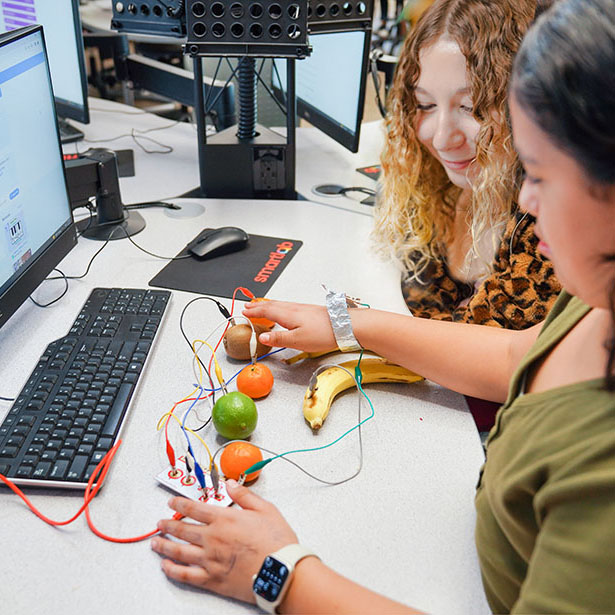
Supporting Social-Emotional Learning Through an Integrated Approach
Addressing the social-emotional needs of students is no longer optional for schools. It is essential for schools to support SEL to reinforce academic achievement and prepare their students for the future.
Learn how SmartLab Learning provides a space, learning approach, and professional development to support schools in addressing the social-emotional needs of their students


